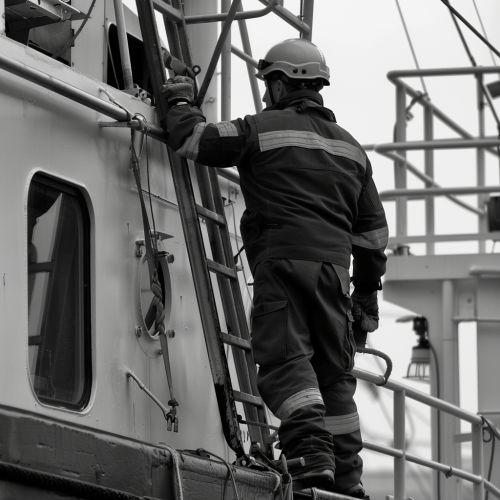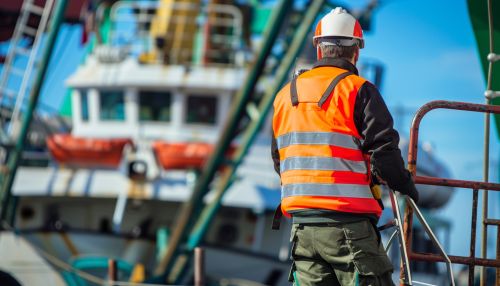Maritime pilot
Introduction
A maritime pilot, also known as a marine pilot, harbor pilot, or ship pilot, is a professional navigator who assists the captain of a ship in navigating through challenging or congested waters, such as harbors, rivers, and canals. Maritime pilots are highly skilled and possess extensive knowledge of local waterways, tides, currents, and other navigational hazards. Their expertise ensures the safe and efficient movement of vessels, preventing accidents and environmental damage.
Historical Background
The role of the maritime pilot dates back to ancient times when local sailors were employed to guide ships through treacherous waters. The Phoenicians and Greeks were among the earliest civilizations to use pilots for navigating their vessels. During the Age of Exploration, the demand for skilled pilots increased as European explorers ventured into uncharted territories. The establishment of formal pilotage services began in the 16th century, with the Trinity House in England being one of the oldest pilotage organizations, founded in 1514.
Training and Certification
Maritime pilots undergo rigorous training and certification processes to ensure they possess the necessary skills and knowledge. The training typically includes:
Education
Prospective pilots usually start with a maritime education, often obtaining a degree from a maritime academy or university. Courses cover subjects such as nautical science, marine engineering, and maritime law.
Sea Service
Candidates must accumulate significant sea service experience, often serving as deck officers or captains on various types of vessels. This practical experience is crucial for understanding ship handling and navigation.
Apprenticeship
After meeting the educational and sea service requirements, candidates enter an apprenticeship program under the supervision of experienced pilots. This hands-on training involves navigating different types of vessels in various conditions and learning the intricacies of local waterways.
Examination and Licensing
Upon completing the apprenticeship, candidates must pass a series of examinations, both written and practical, to obtain their pilot's license. Licensing authorities vary by country, but they generally ensure that pilots meet stringent standards of competence and professionalism.
Duties and Responsibilities
Maritime pilots perform a range of duties to ensure the safe navigation of vessels. These include:
Boarding the Vessel
Pilots typically board vessels at designated pilot stations, often using a pilot boat to transfer from shore to ship. The transfer can be challenging, especially in rough seas.
Once on board, the pilot collaborates with the ship's captain and crew to navigate through the local waters. The pilot provides expert advice on course adjustments, speed, and maneuvering to avoid hazards and ensure safe passage.
Communication
Effective communication is vital for maritime pilots. They must coordinate with port authorities, tugboats, and other vessels to facilitate smooth and safe navigation. Pilots use VHF radio and other communication tools to relay information and instructions.
Docking and Undocking
Pilots play a crucial role in docking and undocking vessels. They guide the ship into and out of berths, ensuring precise maneuvers to avoid collisions and damage to port infrastructure.


Challenges and Risks
The profession of a maritime pilot is fraught with challenges and risks. These include:
Weather Conditions
Pilots often work in adverse weather conditions, including high winds, heavy rain, and rough seas. These conditions can make boarding and navigating vessels particularly hazardous.
Local waterways may contain various navigational hazards, such as shoals, reefs, and narrow channels. Pilots must have an intimate knowledge of these hazards to avoid accidents.
Human Factors
Effective collaboration with the ship's crew is essential for safe navigation. Pilots must overcome language barriers, cultural differences, and varying levels of crew competence.
Technological Advancements
Advancements in technology have significantly impacted the field of maritime pilotage. Some of these advancements include:
Modern ships are equipped with advanced electronic navigation systems, such as Electronic Chart Display and Information System (ECDIS) and Automatic Identification System (AIS). These systems provide real-time information on the vessel's position, speed, and course, aiding pilots in their decision-making.
Pilotage Simulation
Pilotage simulation training has become an integral part of pilot education. Simulators replicate various navigational scenarios, allowing pilots to practice and refine their skills in a controlled environment.
Portable Pilot Units (PPUs)
PPUs are portable devices that pilots carry on board to enhance situational awareness. These units provide real-time data on the vessel's position, speed, and course, as well as detailed charts and tide information.
Regulatory Framework
Maritime pilotage is governed by a complex regulatory framework to ensure safety and efficiency. Key aspects of this framework include:
International Regulations
The International Maritime Organization (IMO) sets global standards for maritime safety, including pilotage. The SOLAS Convention and the International Convention on Standards of Training, Certification and Watchkeeping for Seafarers (STCW) are among the key regulations that impact pilotage.
National Regulations
Each country has its own regulatory body responsible for pilotage. These bodies establish licensing requirements, training standards, and operational guidelines. Examples include the United States Coast Guard and the Maritime and Coastguard Agency in the UK.
Local Regulations
Local port authorities often have specific regulations governing pilotage within their jurisdictions. These regulations address issues such as pilotage fees, boarding procedures, and safety protocols.
Environmental Considerations
Maritime pilots play a crucial role in protecting the marine environment. Their expertise helps prevent accidents that could lead to oil spills, chemical releases, and other environmental disasters. Additionally, pilots contribute to:
Ballast Water Management
Pilots ensure that vessels comply with ballast water management regulations to prevent the spread of invasive species. They advise on proper ballast water exchange procedures and monitor compliance with international standards.
Emission Control
Pilots assist in implementing emission control measures, such as the use of low-sulfur fuels and compliance with Emission Control Areas (ECAs). They provide guidance on navigating through ECAs and adhering to environmental regulations.
Future Trends
The field of maritime pilotage is continually evolving. Some future trends include:
Autonomous Vessels
The development of autonomous vessels presents both challenges and opportunities for maritime pilots. While these vessels may reduce the need for traditional pilotage, pilots will still play a role in overseeing and managing autonomous operations, particularly in complex or congested areas.
Enhanced Training Programs
As technology advances, training programs for maritime pilots will continue to evolve. Virtual reality (VR) and augmented reality (AR) technologies are expected to enhance simulation training, providing more immersive and realistic experiences.
Increased Focus on Sustainability
The maritime industry is placing greater emphasis on sustainability. Pilots will be at the forefront of implementing green practices, such as optimizing vessel routes for fuel efficiency and reducing emissions.
See Also
- Nautical Science
- Marine Engineering
- Maritime Law
- Tugboat
- VHF Radio
- Shoal
- Reef
- Narrow Channel
- Electronic Chart Display and Information System (ECDIS)
- Automatic Identification System (AIS)
- International Maritime Organization (IMO)
- SOLAS Convention
- International Convention on Standards of Training, Certification and Watchkeeping for Seafarers (STCW)
- United States Coast Guard
- Maritime and Coastguard Agency
- Ballast Water Management
- Emission Control Areas (ECAs)
